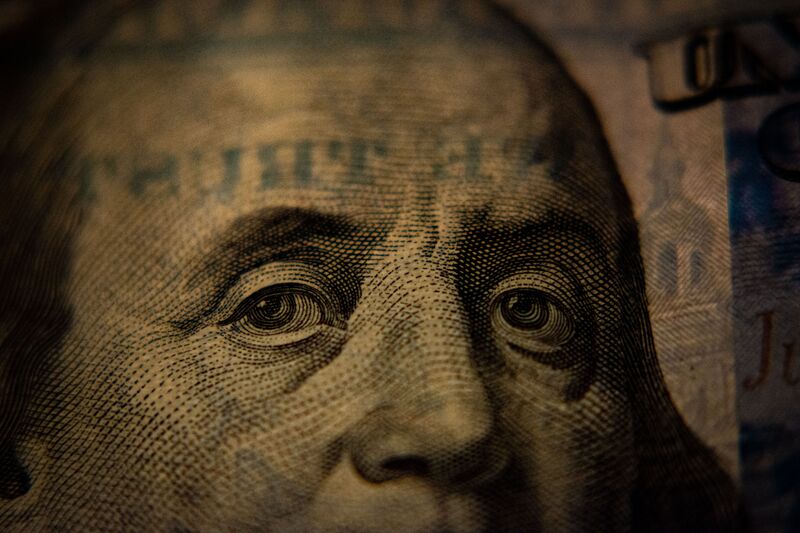Lehman Brothers’ Fourteen-Year Liquidation Ends

By Joseph Barreras*
Another chapter has closed in the fallout of the 2008 financial crisis: Lehman Brothers’ fourteen-year liquidation has ended. In January 2008, Lehman Brothers was the fourth-largest investment bank and had just reported a record high in net income: over $4 billion.[1] By the end of 2008, Lehman Brothers would forever be remembered as the largest corporate bankruptcy filing in U.S. history, totaling over $619 billion in debt.[2]
The securities that made Lehman Brothers into a powerhouse of the 2000s—mortgage-backed securities—also led to its demise.[3] Mortgage-backed securities, like collateralized debt obligations, are securities backed by real estate loans.[4] Certain mortgage-backed securities, however, involved subprime mortgages: mortgages that carry a higher risk of default and thus charge a higher interest rate. Before the Glass-Steagall Act was repealed, it worked to “prevent[] high-risk wall street gambling from endangering the commercial bank” by separating investment banks from commercial banking activities.[5] When that legislation was repealed in 1999, it ushered in a new generation of risk-taking and leverage by allowing investment banks to speculate further, knowing they were insured by government-backed regulations and institutions such as the Federal Deposit Insurance Corporation (“FDIC”).[6] This meant that the government would get involved when the uninsured aspects of the bank “threatened to take down the FDIC-insured part of the bank.”[7]
Through the early to mid-2000s, Lehman Brothers spent its time and funds acquiring several different mortgage lenders, eventually amassing a leverage ratio of 31.[8] As the real estate and equity markets began to fall, coupled with the Bear-Stearns collapse, Lehman Brothers watched its stock and cash reserves plummet in September 2008. In a last-ditch effort, CEO Richard Fuld took steps to de-leverage, to reduce mortgage exposure, and to spin off and sell several divisions of Lehman Brothers.[9] Some would say this was too little, too late. Lehman Brothers was hemorrhaging billions of dollars each month in losing investments, leaving it with only $1 billion in cash before attempting to facilitate a takeover by Bank of America and Barclays, which ultimately failed.[10] The following Monday, September 15, Lehman Brothers declared bankruptcy.[11]
Almost 14 years to the day, Lehman Brothers’ liquidation ended on Wednesday, September 28. The order was issued Wednesday, the 28th of September, by Judge Shelley C. Chapman of the U.S. Bankruptcy Court for the Southern District of New York.[12] James Giddens, of Hughes Hubbard & Reed LLP, acted as trustee overseeing the liquidation, helping to see that “Lehman’s 111,000 customers received all $106 billion they were owed, and secured creditors also received full payouts. Unsecured creditors recovered $9.4 billion, or about 41 cents on the dollar.”[13]
The question remains: what has changed in the last fourteen years? First, we have the Dodd-Frank Act, passed in 2010 in response to the 2008 financial crisis.[14] A large part of the 2008 crisis was caused by the predatory tactics used by banks in issuing subprime mortgages.[15] Dodd-Frank introduced the Consumer Financial Protection Bureau, which completely changed how lenders disclose information to consumers, thereby eradicating a large fear that remained from the 2008 crisis.[16] Second, the Volcker Rule was introduced, leaning us back towards the time of the Glass-Steagall Act and restricting how banks can invest.[17] Additionally, the Securities and Exchange Commission (“SEC”) formed the Office of Credit Ratings, “charged with ensuring that agencies provide meaningful and reliable credit ratings of the businesses, municipalities, and other entities that they evaluate.”[18] In an effort to help smaller banks, President Trump signed into law the Economic Growth, Regulatory Relief, and Consumer Protection Act in 2018.[19] This rolled back portions of the Dodd-Frank Act in the face of criticisms that it was too restrictive on smaller, regional banks, which played little to no role in the 2008 crisis.[20]
While market corrections, collapses, and resurgences are all part of a healthy cycle of the economy, we are still left questioning if we are prepared for the “next 2008.” After the trial concluded on Wednesday, Giddens, the trustee overseeing the liquidation, said “The LBI case ultimately taught us that a failure of a large financial institution should be avoided, but history tells us that it is inevitable.”[21] “While the exact cause of that failure may presently be unknown, no law will prevent all causes of future financial institution collapses.”[22] Time will tell if we learned our lesson from 2008, or if we will repeat the missteps that lead us to the crisis.
* J.D. Candidate, Class of 2024, Sandra Day O’Connor College of Law at Arizona State University.
[1] Lehman Brothers – A Fall From Grace, CORP. FIN. INST., https://corporatefinanceinstitute.com/resources/knowledge/finance/lehman-brothers/ (last updated May 6, 2020).
[2] Id.
[3] Nick Lioudis, The Collapse of Lehman Brothers: A Case Study, INVESTOPEDIA, https://www.investopedia.com/articles/economics/09/lehman-brothers-collapse.asp (last updated Jan. 30, 2021).
[4] Mortgage Backed Securities, FINRA, https://www.finra.org/investors/learn-to-invest/types-investments/bonds/types-of-bonds/mortgage-backed-securities (last visited Oct. 4, 2022).
[5] Fact Sheet: Glass-Steagall Financial Reform Law and Efforts to Reinstate It, BETTER MARKETS 2, (May 1, 2017), https://bettermarkets.org/sites/default/files/Better%20Markets%20Fact%20Sheet%20on%20Glass-Steagall%20_0.pdf.
[6] See id.
[7] Id. at 1.
[8] Lioudis, supra note 3.
[9] See id.
[10] Id.
[11] Id.
[12] Alex Wolf, Lehman Brothers 14-Year Brokerage Liquidation Case Comes to End, Bloomberg L. (Sept. 28, 2022, 3:24 PM), https://www.bloomberglaw.com/product/blaw /bloomberglawnews/bloomberg-law-news/XFF8707O000000?bc=W1siU2VhcmNoICYgQnJvd3N lIiwiaHR0cHM6Ly93d3cuYmxvb21iZXJnbGF3LmNvbS9wcm9kdWN0L2JsYXcvc2VhcmNoL3J lc3VsdHMvZjFhYzkzYmIzODIzN2VjMzA1YjhkMjcwY2M2ZWNiZjgiXV0–1bfc01ddbee8dbdd ff2a68c06b7e6c8e8a666e9c&bna_news_filter=bloomberg-law-news&criteria_id=f1ac93bb38237e c305b8d270cc6ecbf8&search32=PrZei7GWyb45srDlv8gB8A%3D%3D37SdLJEklHiQGqufEwW y5Fvwp2ae-cWlROuumGWJz8haj-OnSrKuOYoua2oozgdY6u9J-LBrbJpNxZmHIrkl0B7rTq28bJbcvgb_oQ_GJXK4SmvjaN9rke992N-EtRL8.
[13] Id.
[14] Dodd-Frank Wall Street Reform and Consumer Protection Act, H.R. 4173, 111th Cong. (2010), https://www.cftc.gov/sites/default/files/idc/groups/public/@swaps/documents/file/hr4173 _enrolledbill.pdf.
[15] See Wolf, supra note 12.
[16] Adam Hayes, Dodd-Frank Act: What It Does, Major Components, Criticisms, INVESTOPEDIA, https://www.investopedia.com/terms/d/dodd-frank-financial-regulatory-reform-bill.asp (last updated Sept. 8, 2022).
[17] See id.
[18] Id.
[19] Economic Growth, Regulatory Relief, and Consumer Protection Act, PUB. L. NO. 115-174, 132 STAT. 1296. https://www.congress.gov/115/plaws/publ174/PLAW-115publ174.pdf.
[20] See Hayes, supra note 16.
[21] Wolf, supra note 12.
[22] Id.


